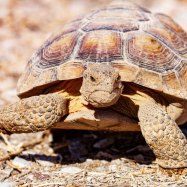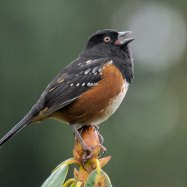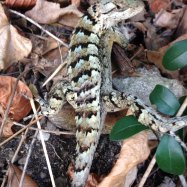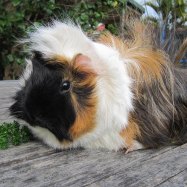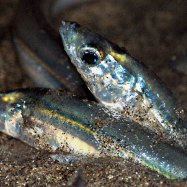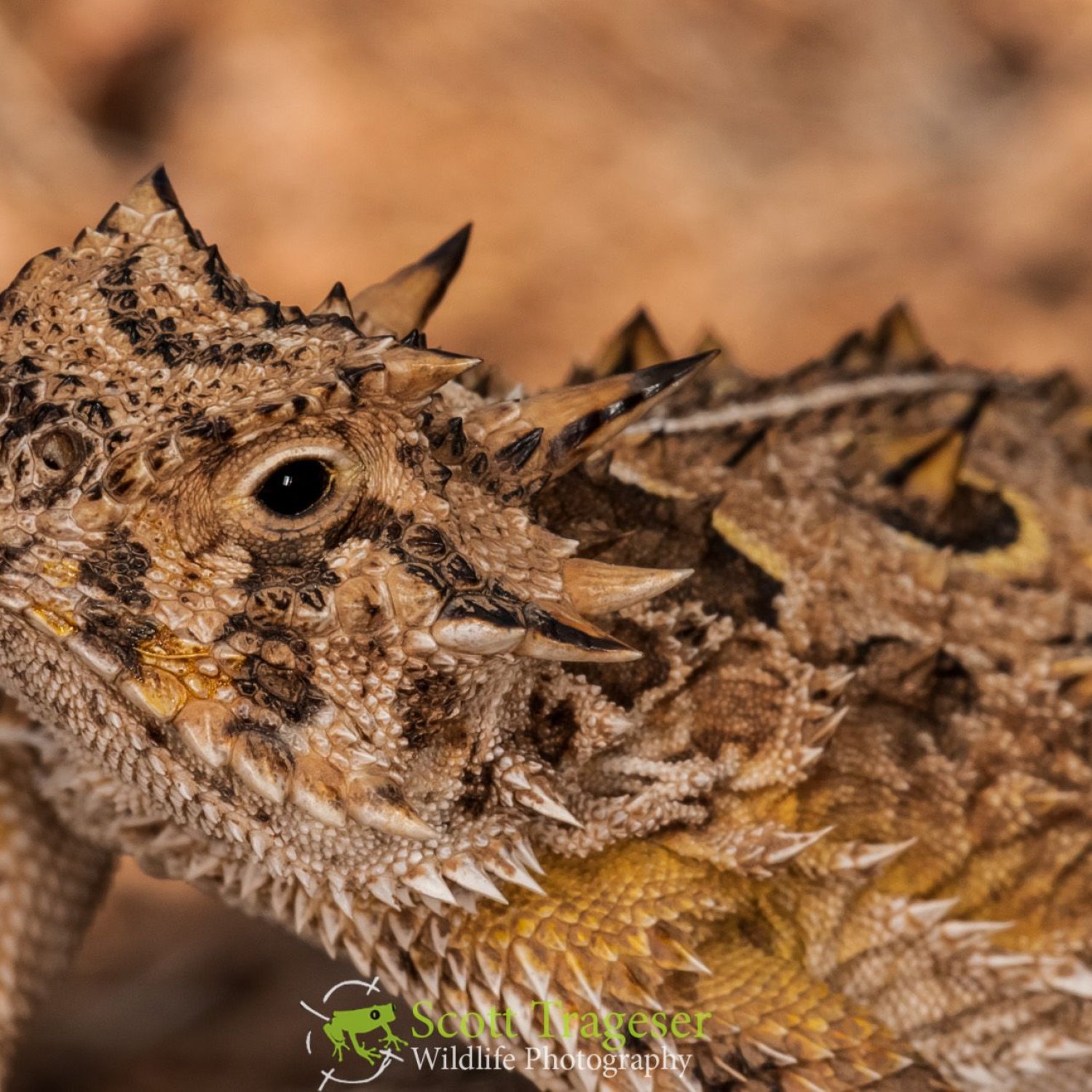
Horned Lizard
2.5 to 10 inches
The Horned Lizard, also known as the horny toad, is a unique reptile found in the southwestern United States and northern Mexico. With a length of 2.5 to 10 inches, its distinct body shape is short and squat. Part of the Phrynosomatidae family, these spiny creatures are fascinating to observe in their natural habitats. Keep an eye out for these curious creatures on your next desert adventure.
Animal Details Summary:
Common Name: Horned Lizard
Kingdom: Animalia
Habitat: Deserts, grasslands, and shrublands
The Mysterious and Majestic Horned Lizard: A Master of Camouflage
The desert landscape is a harsh and unforgiving environment, with scorching heat and limited resources. Yet, hidden among the dry sand and shrubbery lies a creature that has adapted to thrive in this seemingly inhospitable terrain - the horned lizard.Also known as the "horny toad," this reptile is a master of camouflage, making it a challenging creature to spot in its natural habitat. It has a unique appearance, with a distinctive shape and horned scales that have earned it its name Horned Lizard. But there's more to this creature than meets the eye. Let's delve into the mysterious world of the horned lizard, its characteristics, habitat, and remarkable abilities.
Meet the Horned Lizard: A Closer Look at its Taxonomy
The horned lizard belongs to the Phrynosomatidae family and is a species of the Phrynosoma genus. Its scientific name is Phrynosoma, derived from the Greek words "phrynos" meaning toad and "soma" meaning body. It is also known as the "horned lizard" due to the protrusions on its head that resemble horns.Belonging to the Animalia kingdom, Phrynosoma is classified under the Chordata phylum, which includes animals with a dorsal nerve cord and a notochord. Its class is Reptilia, meaning it is a scaly-skinned, ectothermic, and oviparous animal. The horned lizard falls under the Squamata order, which includes all lizards and snakes.
An Inhabitant of the Harsh Desert Ecosystem
The horned lizard is well-adapted to survive in the harsh desert environment Honey Bee. It can be found in deserts, grasslands, and shrublands in North and Central America. Its natural habitat includes rocky areas, sand dunes, and dry plains, where it burrows into the sand or hides under shrubs to escape the scorching sun.These reptiles can also be found in the southwestern United States and northern Mexico, making them a common sight in states like Arizona, Texas, and New Mexico.
The Horned Lizard's Diet: A Specialized Insectivore
The horned lizard is an insectivore, meaning it primarily feeds on insects. It has a specialized feeding method, using its long, sticky tongue to capture its prey. Interestingly, it can shoot its tongue to a distance of one-third of its body length, making it an excellent tool for catching insects.Some of its favorite meals include ants, beetles, and grasshoppers. Due to its slow metabolism, it can survive on a small amount of food, often only eating a few times a week.
Camouflaged to Perfection: The Horned Lizard's Unique Features
One of the most remarkable features of the horned lizard is its specialized body shape and coloration. Its short and squat body makes it well-suited for living in the desert, allowing it to navigate through the sand and rocks with ease. Its coloration also plays a crucial role in its survival.The horned lizard's scales are camouflaged with shades of gray, brown, and tan, making it incredibly challenging to spot in its natural habitat. It blends in seamlessly with its surroundings, making it invisible to predators like snakes, coyotes, and birds of prey. These scales also serve as a protective armor, as they are thick and sharp, making it difficult for predators to swallow them.
Size Matters: An Insight into the Horned Lizard's Dimensions
The average size of a horned lizard ranges from 2.5 to 10 inches, with males being slightly larger than females. This reptile has several distinct physical characteristics, including its horns, spines, and a flattened body. Its horns on the back of its head are used for defense, and they can grow up to five millimeters in length.The horned lizard's body is also covered in sharp scales, ranging from short spines to long pointed ones. These spines are found on its head, back, and sides, serving as a protective measure against predators.
The Conservation Status of the Horned Lizard
Despite its unique adaptations and abilities, the horned lizard is facing several threats to its population. One of the primary threats is habitat loss due to human development in their natural habitats. Additionally, their slow reproductive rate and their specialized diet make them vulnerable to the effects of climate change and disturbance in their ecosystem.While not all species of horned lizards are considered endangered, many of them are listed as vulnerable or threatened, including the round-tailed horned lizard and the pygmy short-horned lizard.
Preserving the Wonders of Nature: Our Role in Protecting the Horned Lizard
As humans, it is essential to understand the impact we have on the environment and the creatures that call it home. To ensure the survival of the horned lizard and other species, we must take measures to protect their habitats. This includes reducing industrial development, carefully managing recreational activities in their habitats, and conserving their food sources.Moreover, we can also help by reducing our carbon footprint, which can have a significant impact on the effects of climate change. As the horned lizard's natural habitat becomes more vulnerable to the changing climate, it is our responsibility to take steps to mitigate these effects.
The Horned Lizard: A Fascinating Creature of the Desert
In conclusion, the horned lizard is a truly fascinating creature, with unique characteristics and abilities that have allowed it to thrive in harsh environments. Its mastery of camouflage and specialized adaptations make it a creature that is both mysterious and majestic. As we continue to protect and preserve its natural habitat and food sources, we can ensure that this enigmatic reptile continues to roam the deserts for generations to come.

Horned Lizard
Animal Details Horned Lizard - Scientific Name: Phrynosoma
- Category: Animals H
- Scientific Name: Phrynosoma
- Common Name: Horned Lizard
- Kingdom: Animalia
- Phylum: Chordata
- Class: Reptilia
- Order: Squamata
- Family: Phrynosomatidae
- Habitat: Deserts, grasslands, and shrublands
- Feeding Method: Insectivorous
- Geographical Distribution: North and Central America
- Country of Origin: United States and Mexico
- Location: Southwestern United States and Northern Mexico
- Animal Coloration: Camouflaged with shades of gray, brown, and tan
- Body Shape: Short and squat
- Length: 2.5 to 10 inches
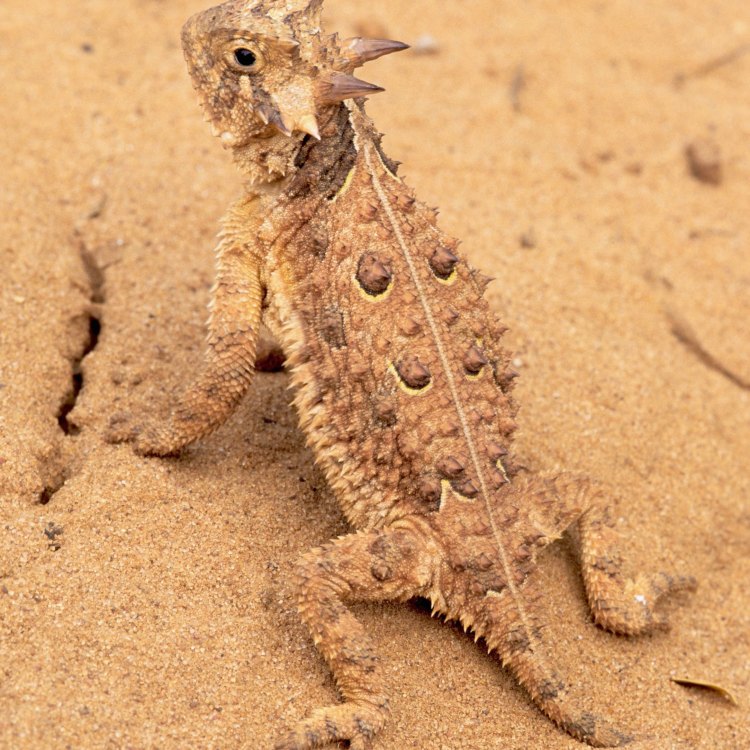
Horned Lizard
- Adult Size: Medium-sized
- Average Lifespan: 5 to 10 years
- Reproduction: Sexual
- Reproductive Behavior: Mating occurs from April to July
- Sound or Call: Can make hissing sounds
- Migration Pattern: Non-migratory
- Social Groups: Solitary
- Behavior: Largely diurnal and thermoregulate by basking in the sun
- Threats: Habitat loss, predation, and illegal collection for pet trade
- Conservation Status: Various species are listed as vulnerable or least concern
- Impact on Ecosystem: Important role in insect population control
- Human Use: Some species are kept as pets
- Distinctive Features: Large, spiky head and unique spikes on the body
- Interesting Facts: Can shoot blood from their eyes as a defense mechanism
- Predator: Coyotes, snakes, birds, and mammals
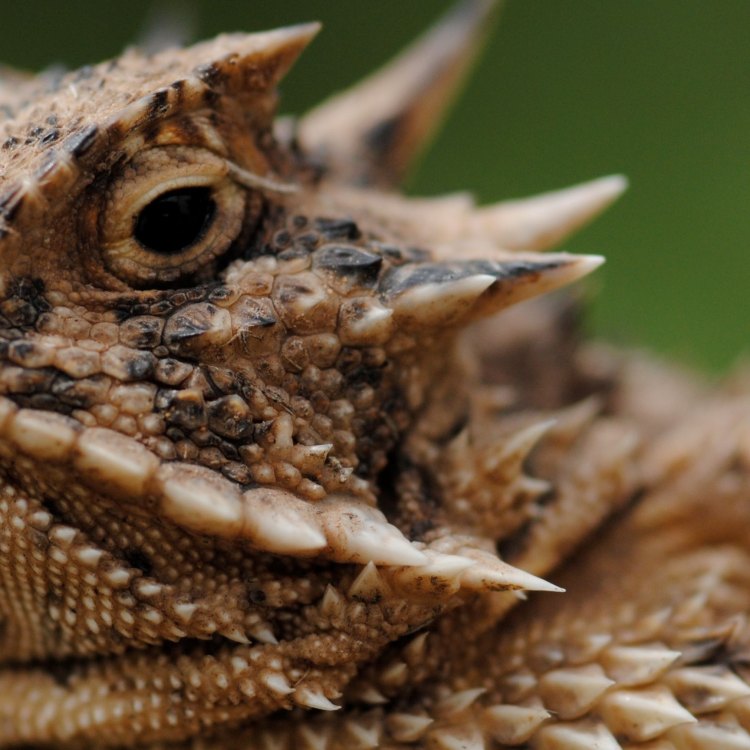
Phrynosoma
The Fascinating World of the Horned Lizard: An Unlikely Hero of the Ecosystem
Nestled in the deserts and arid regions of North and Central America, the horned lizard is a creature that often goes unnoticed. However, upon closer inspection, this unique lizard reveals itself to be a true marvel of nature. From its distinctive features to its incredible defense mechanisms, the horned lizard has captured the curiosity of researchers and nature enthusiasts alike. In this article, we will delve into the fascinating world of the horned lizard and uncover the secrets of this lesser-known reptile PeaceOfAnimals.Com.Size and Lifespan: The horned lizard, also known as the horned toad, is a medium-sized reptile, with adults ranging from 5 to 7 inches in length. They can weigh anywhere from 1 to 1.5 ounces, making them a relatively small lizard in comparison to other species. However, what they lack in size, they make up for in their distinctive appearance and behaviors.
In terms of lifespan, the horned lizard has an average lifespan of 5 to 10 years, but some individuals have been known to live up to 14 years in captivity. This lifespan may seem short compared to other reptile species, but the horned lizard has adapted to thrive in harsh environments, making the most out of their shorter lifespan.
Reproduction and Behavior: The horned lizard is a sexual species, with mating occurring from April to July. During this time, the male lizards will perform a series of behaviors to attract a female, including head-bobbing, pushing against each other, and even biting the female's neck. Once mating is successful, the female will lay her eggs in the sand, and the young will hatch in late summer or fall Honey Buzzard.
As for their behavior, horned lizards are largely diurnal, meaning they are active during the day and sleep at night. They are also solitary animals, preferring to live and hunt alone rather than in groups. This behavior may be one of the reasons for their distinctive features, as they rely on their unique appearance and defense mechanisms instead of being part of a group for protection.
Distinctive Features and Defense Mechanisms: One of the most striking features of the horned lizard is its large, spiky head. It is this feature that gives the lizard its name, as the protrusions resemble horns. They also have unique spikes on their bodies, making them look like miniature dragons. These features not only give them a distinct appearance but also serve as a defense mechanism against predators.
But perhaps the most fascinating defense mechanism of the horned lizard is its ability to shoot blood from its eyes. When threatened by a predator, the lizard will release blood from the corners of its eyes, aiming it at the predator's eyes. This not only startles the predator but also contains a chemical that can be toxic to some species, making it an effective form of protection.
Threats and Conservation Status: Despite their unique appearance and defense mechanisms, horned lizards face numerous threats in their natural habitat. Habitat loss due to human development is a major threat to their survival. As they rely on rocky, sandy areas for shelter, their habitats are often destroyed or fragmented by urbanization. They also face predation from coyotes, snakes, birds, and mammals, making it crucial to have enough resources and shelter to avoid becoming prey.
Furthermore, the illegal collection of horned lizards for the pet trade also poses a significant threat to their populations. These lizards may seem like interesting and unique pets, but they are not suited for domestication and require specialized care to thrive. This harmful practice not only disrupts the natural balance of the ecosystem but also leads to declines in horned lizard populations.
As a result of these threats, various species of horned lizards are listed as vulnerable or least concern on the International Union for Conservation of Nature (IUCN) Red List. Conservation efforts are being made to protect and preserve their habitats, but more work needs to be done to ensure the survival of these fascinating creatures.
Importance and Impact on the Ecosystem: Although often overlooked, the horned lizard plays an important role in maintaining the balance of the ecosystem. As insect predators, they help control insect populations, ensuring that they do not become overwhelming. In their natural habitat, horned lizards are also preyed upon by other species, which contributes to the flow of energy and nutrients in the ecosystem.
Furthermore, the unique desert habitats that horned lizards inhabit are also home to many other species, making their conservation crucial for the overall health of the ecosystem. Without the presence of horned lizards, the delicate balance of this environment could be disrupted, leading to cascading effects on other species and the ecosystem as a whole.
Human Use and Research: While some species of horned lizards are kept as pets, they are not suitable for domestication and thrive best in their natural habitats. However, humans have long been fascinated by these creatures, leading to extensive research and study.
In recent years, scientists have turned their attention to the unique defense mechanism of the horned lizard's ability to shoot blood from its eyes. This remarkable ability has caught the attention of researchers, who are studying the chemical composition of the blood and its possible applications in medicine and defense technology.
The Intriguing World of the Horned Lizard: In conclusion, the horned lizard may seem like just another desert reptile, but with its distinctive features, fascinating behaviors, and crucial role in the ecosystem, it is a creature that deserves more attention and protection. As we continue to learn more about these incredible creatures, let us also do our part in conserving their habitats and ensuring their survival for generations to come. Who knew that such a small and unassuming creature could play such a vital role in the ecosystem? The world of the horned lizard truly is full of surprises, and there is still so much more to discover about these incredible creatures.
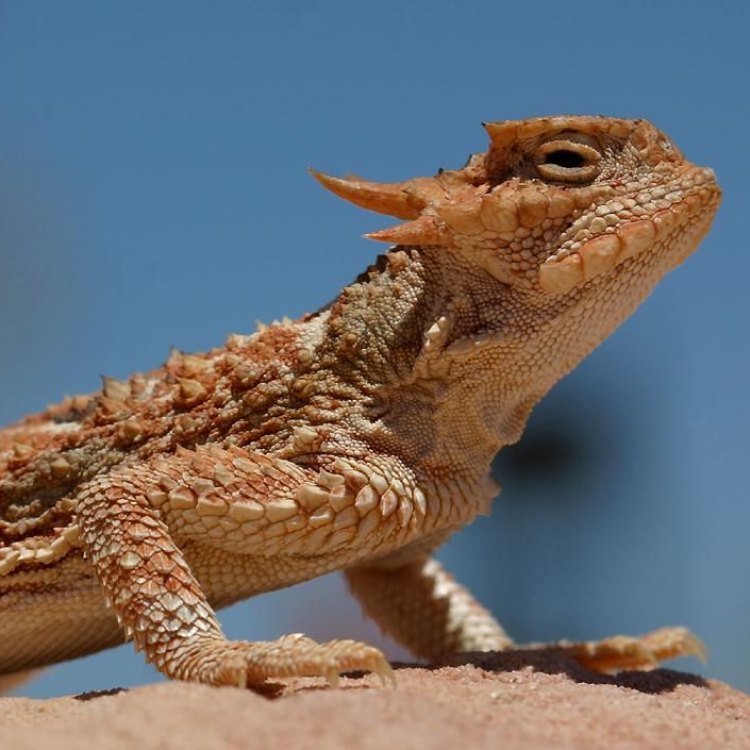
The Mysterious and Majestic Horned Lizard: A Master of Camouflage
Disclaimer: The content provided is for informational purposes only. We cannot guarantee the accuracy of the information on this page 100%. All information provided here may change without prior notice.



